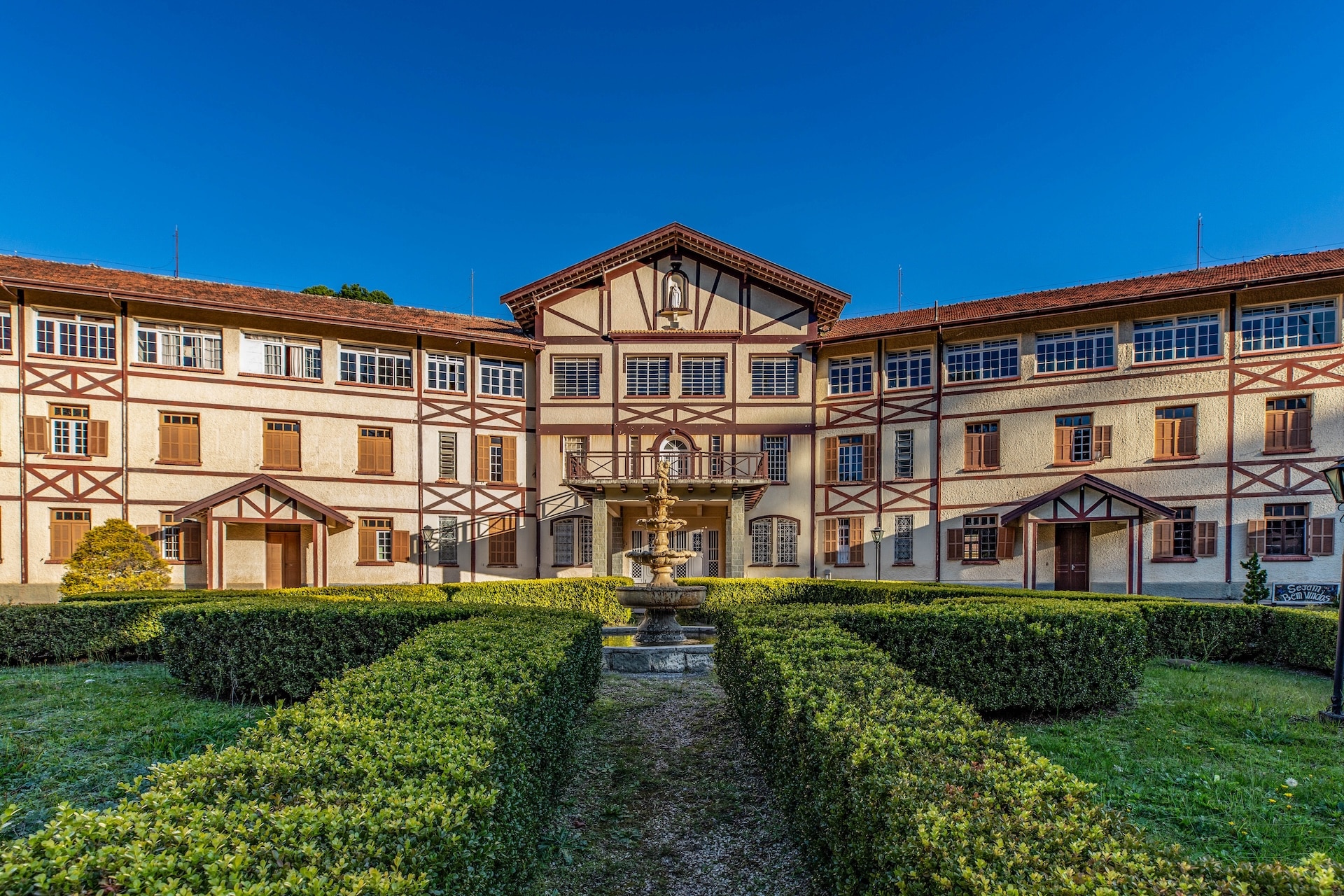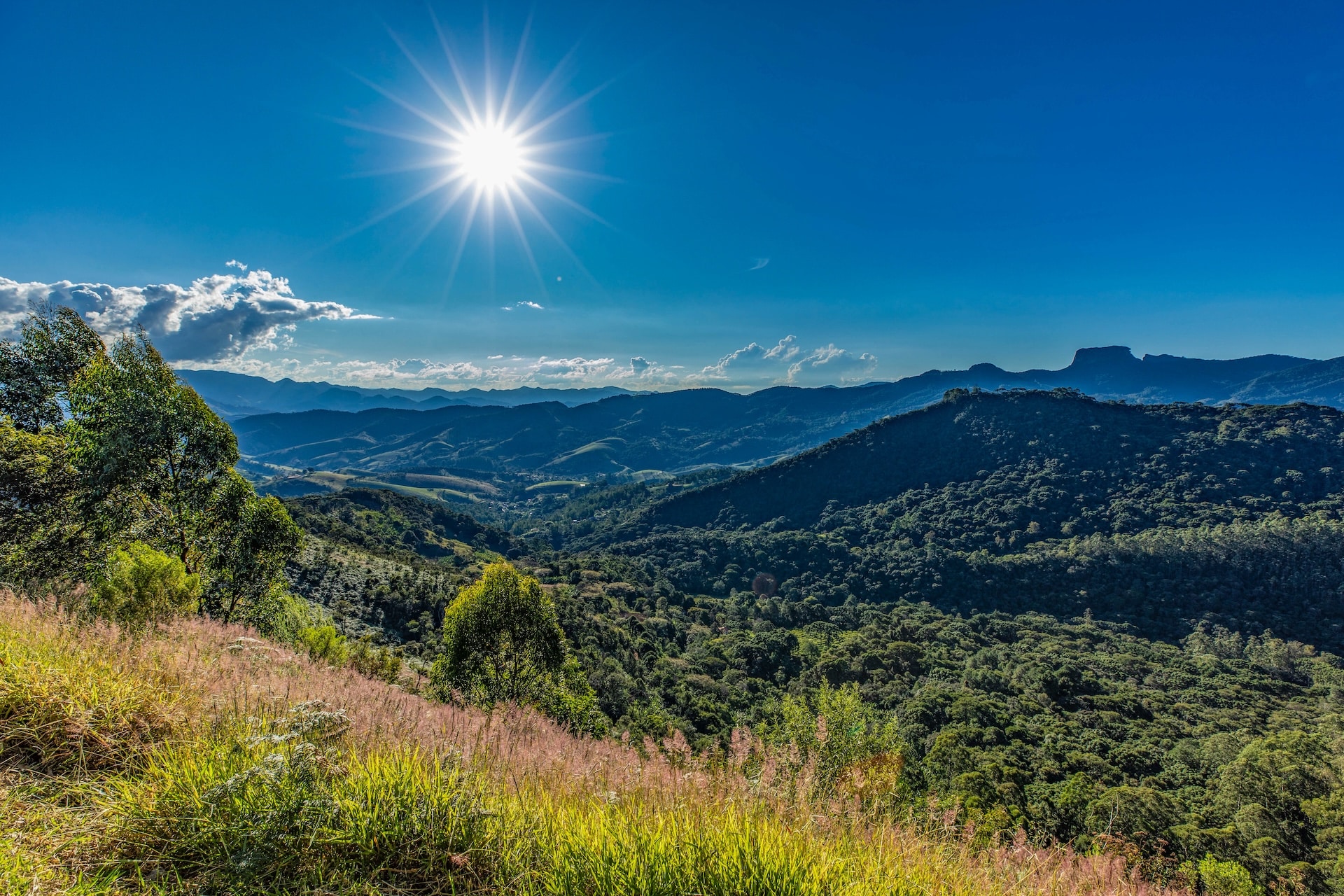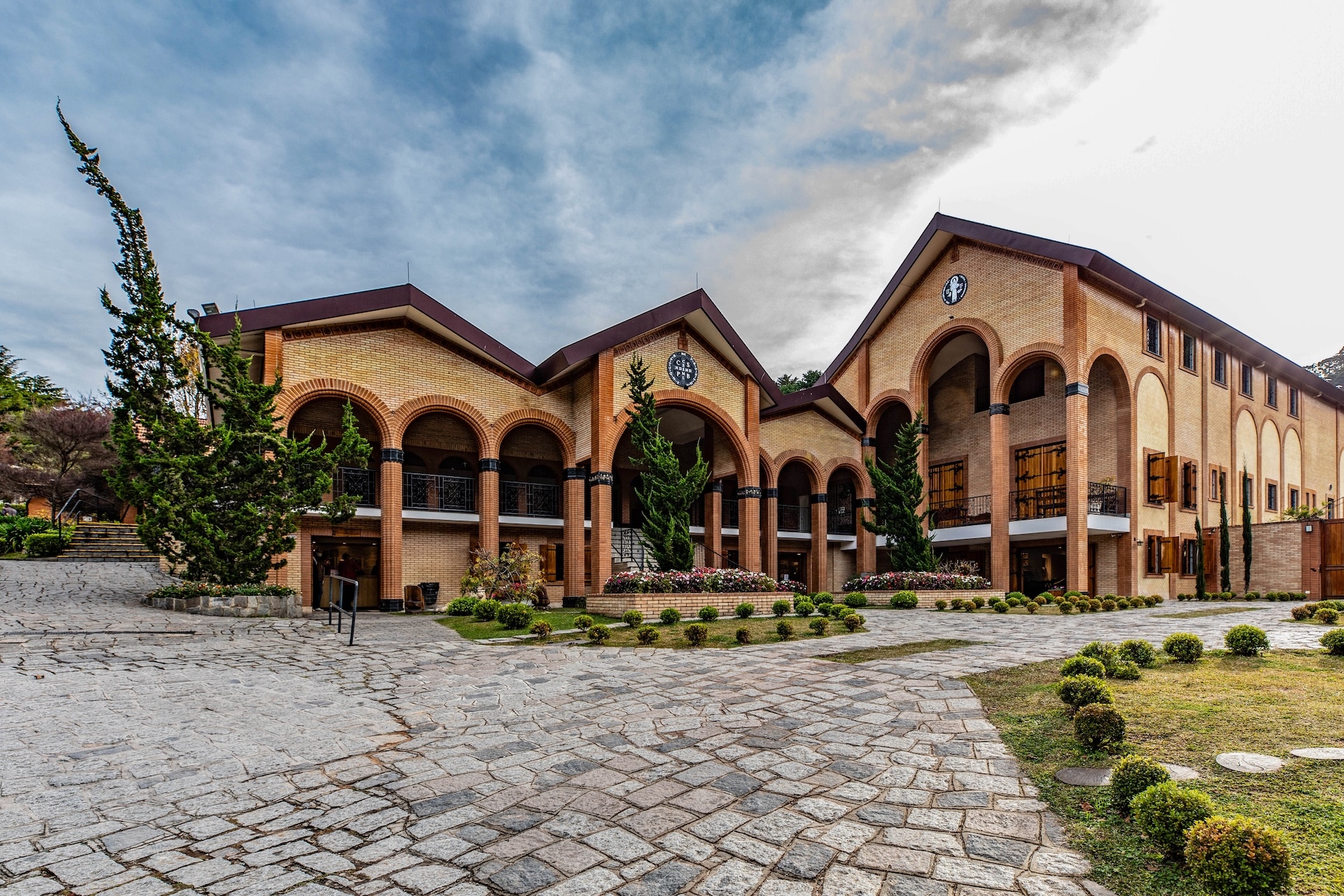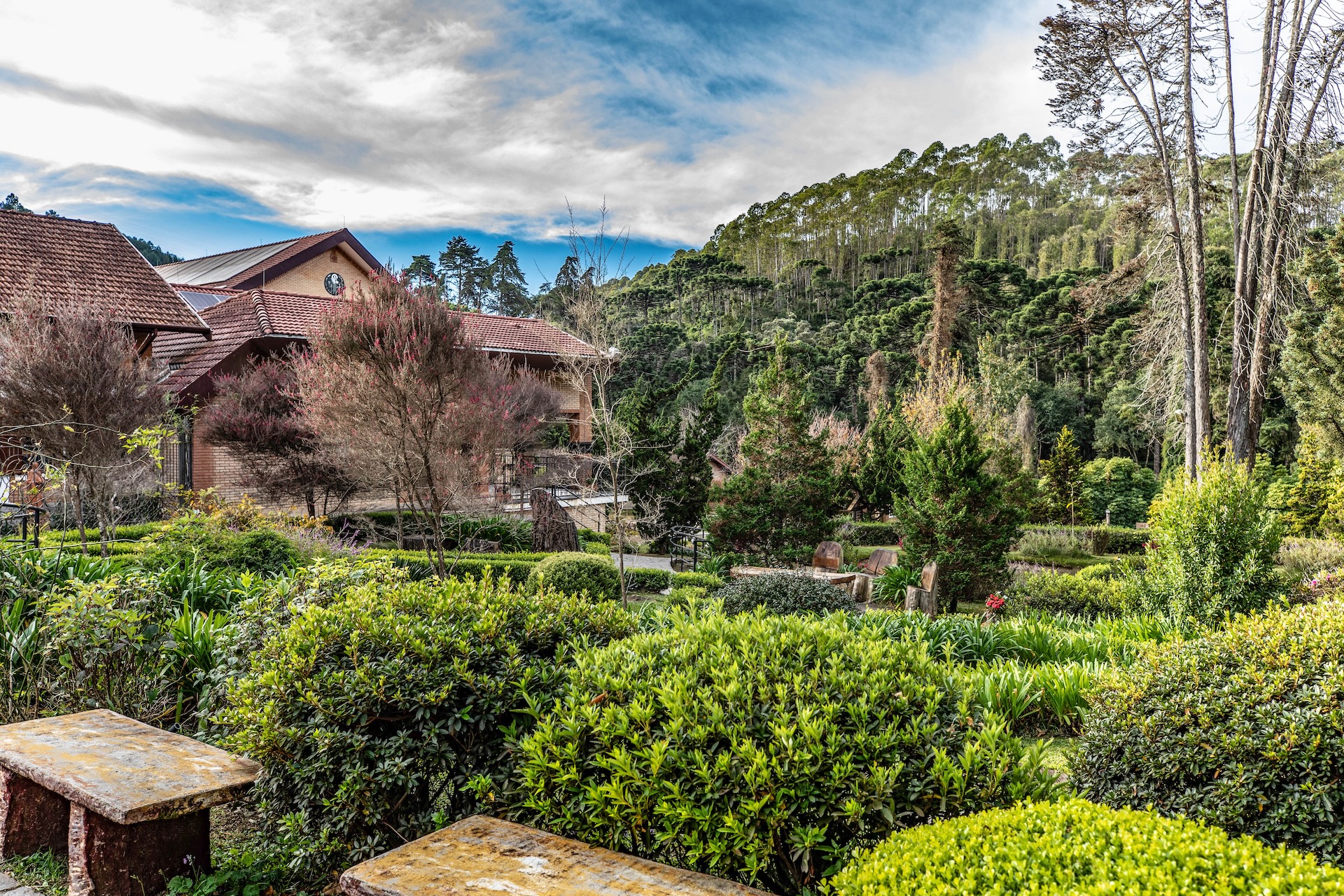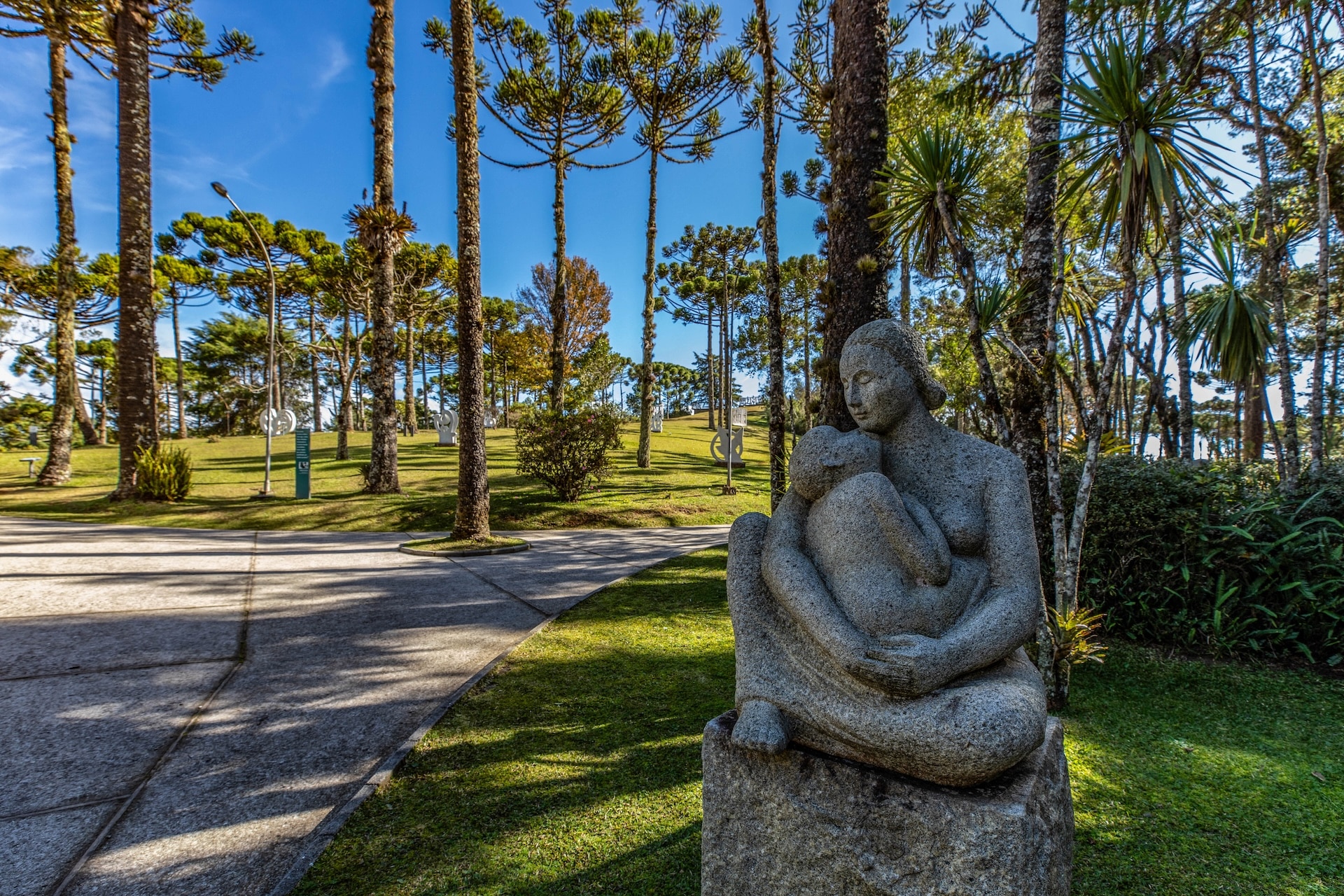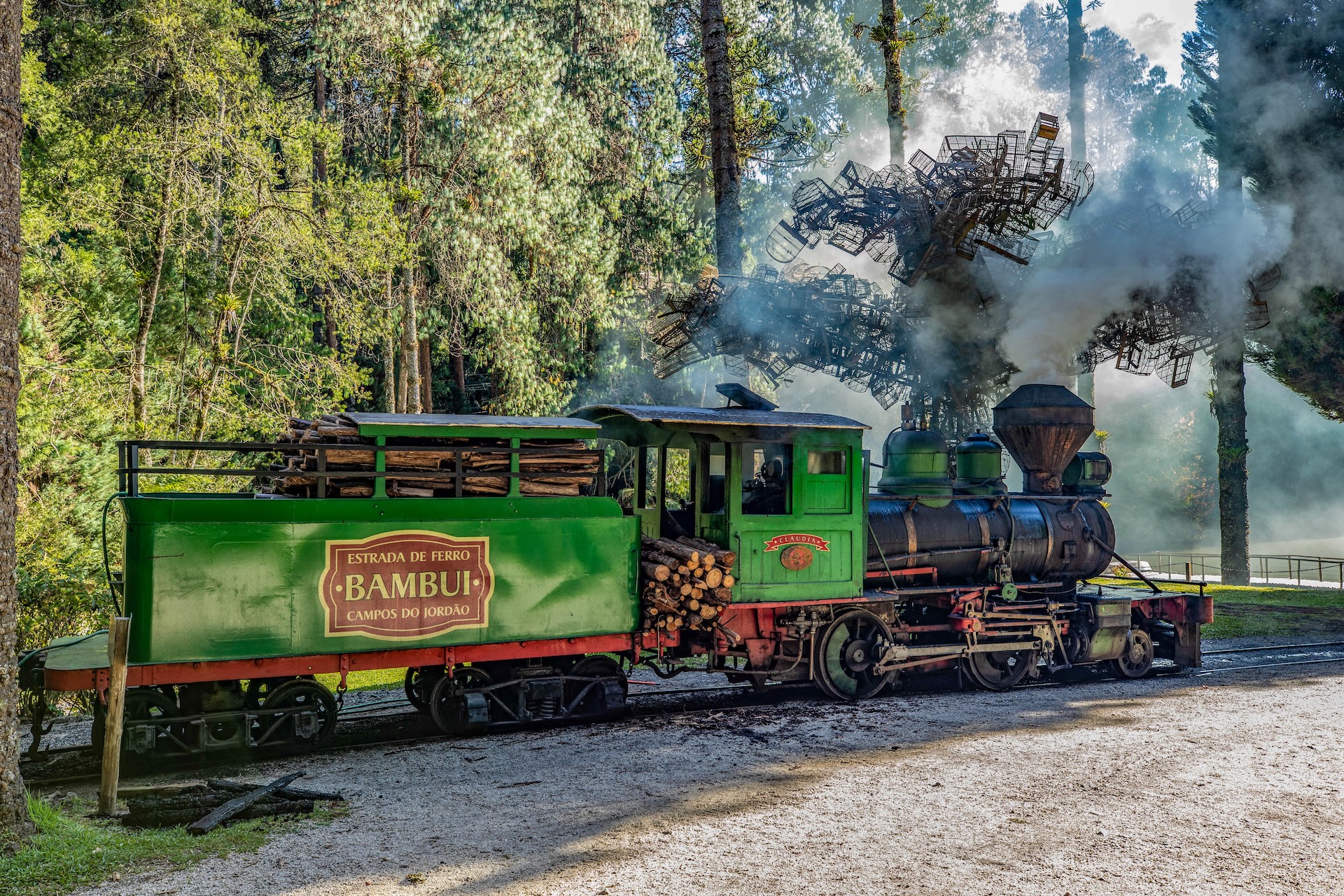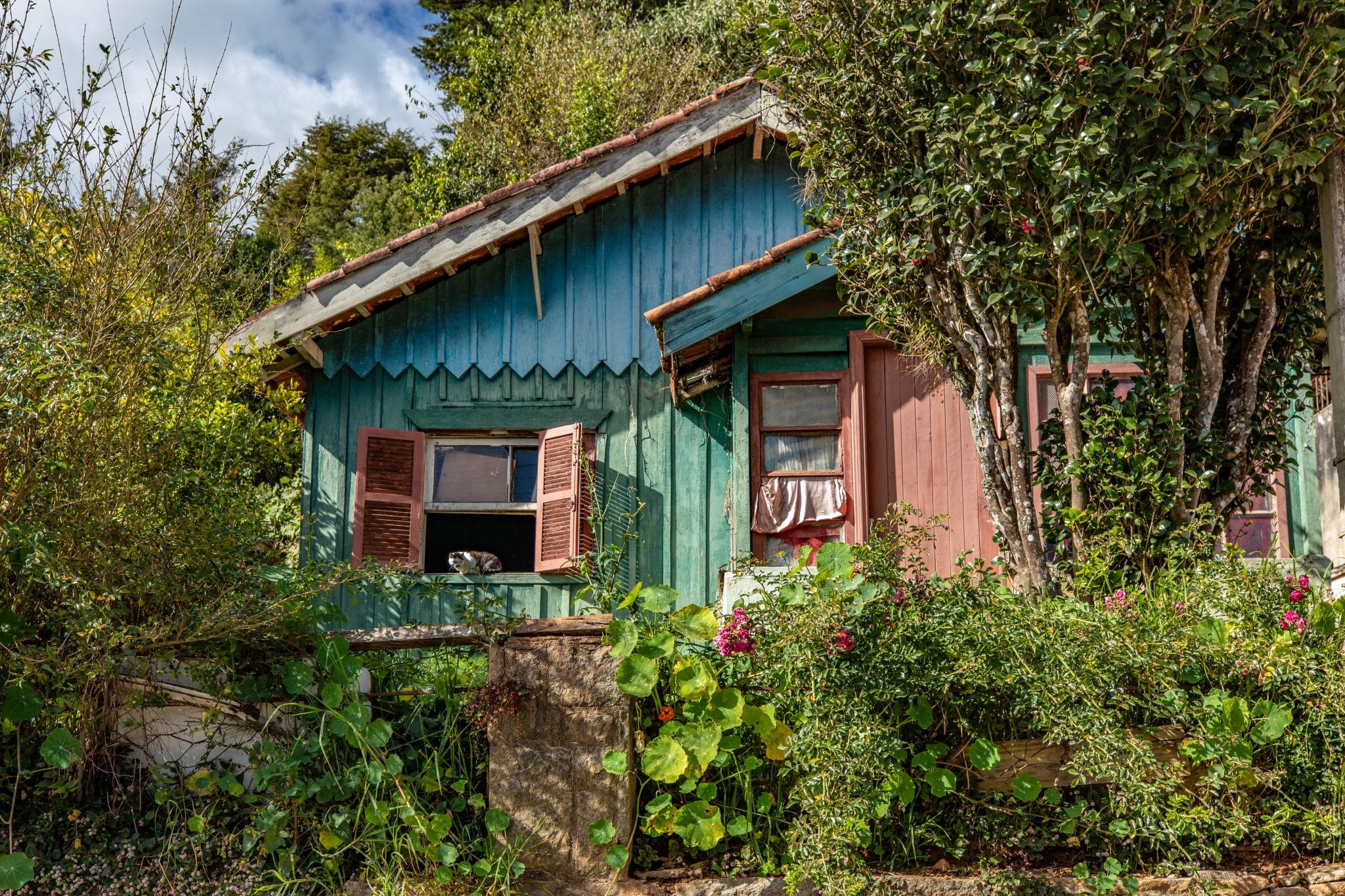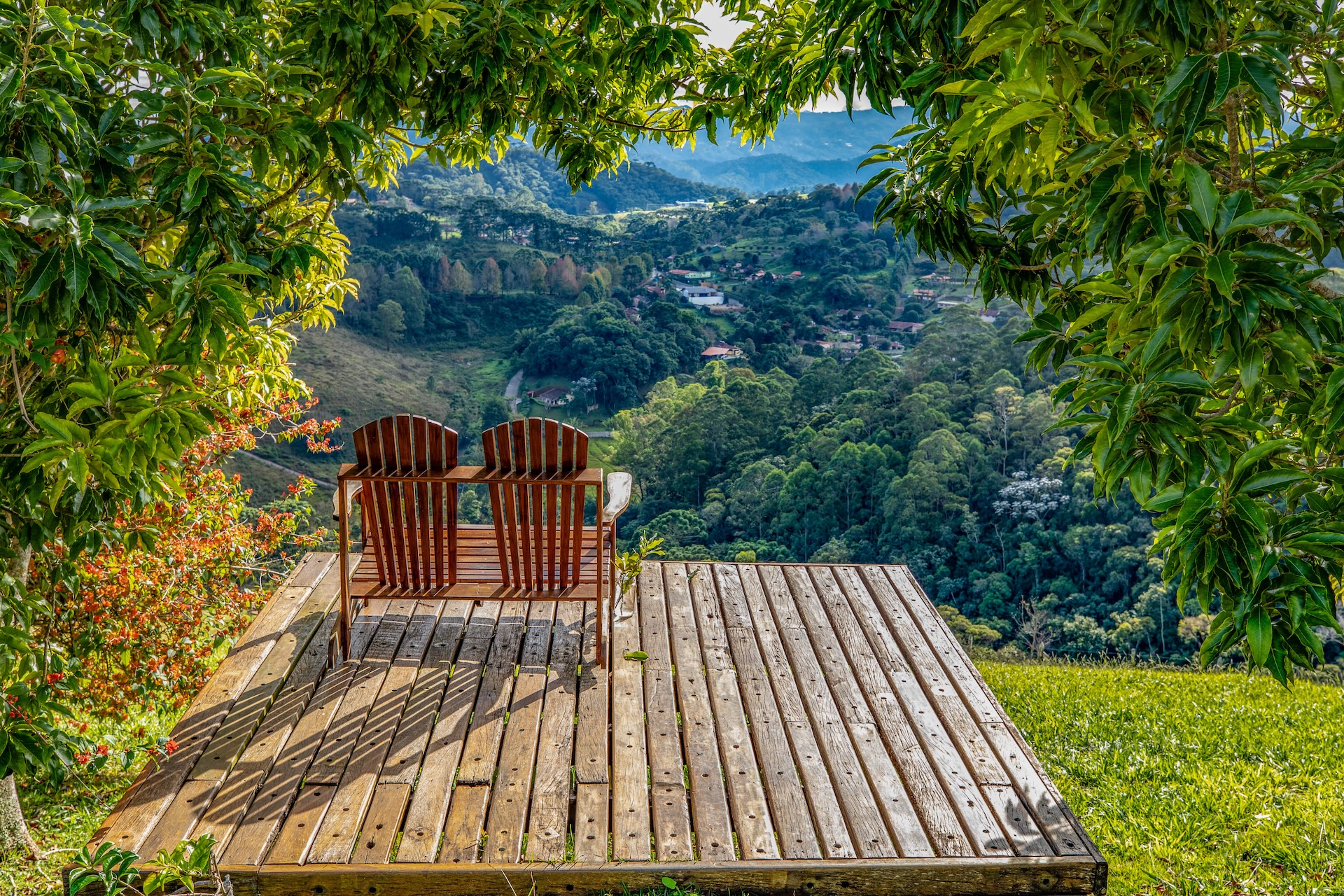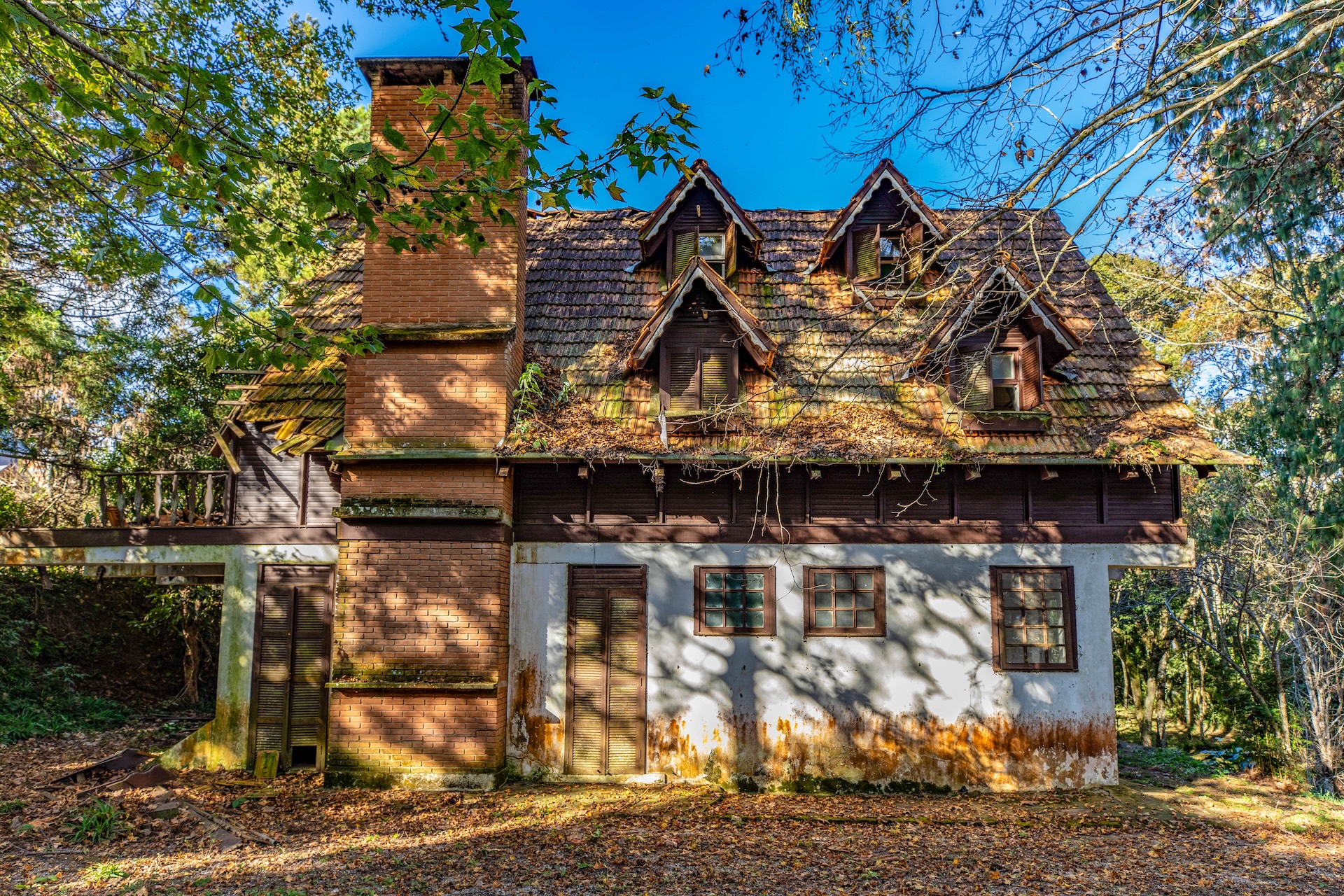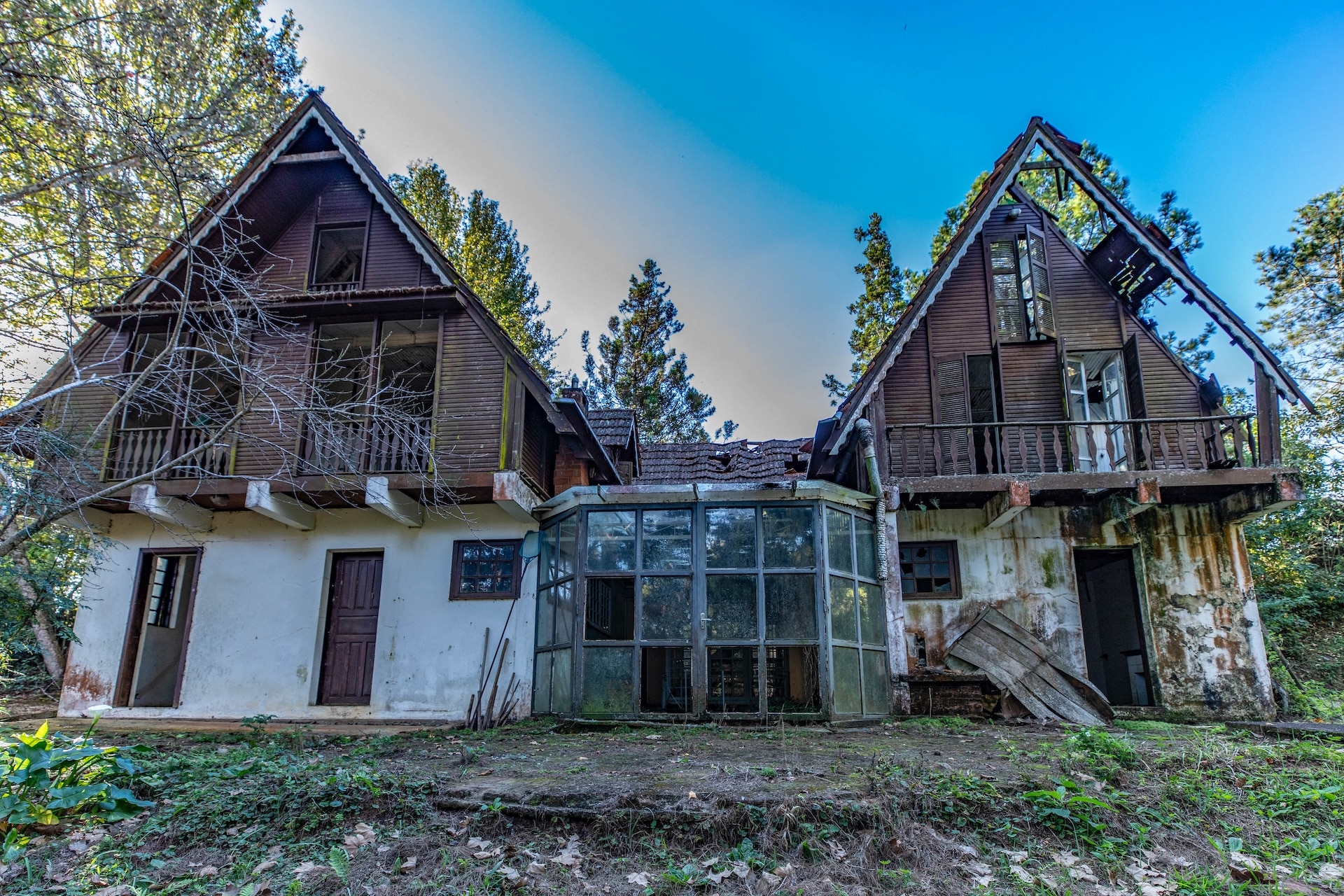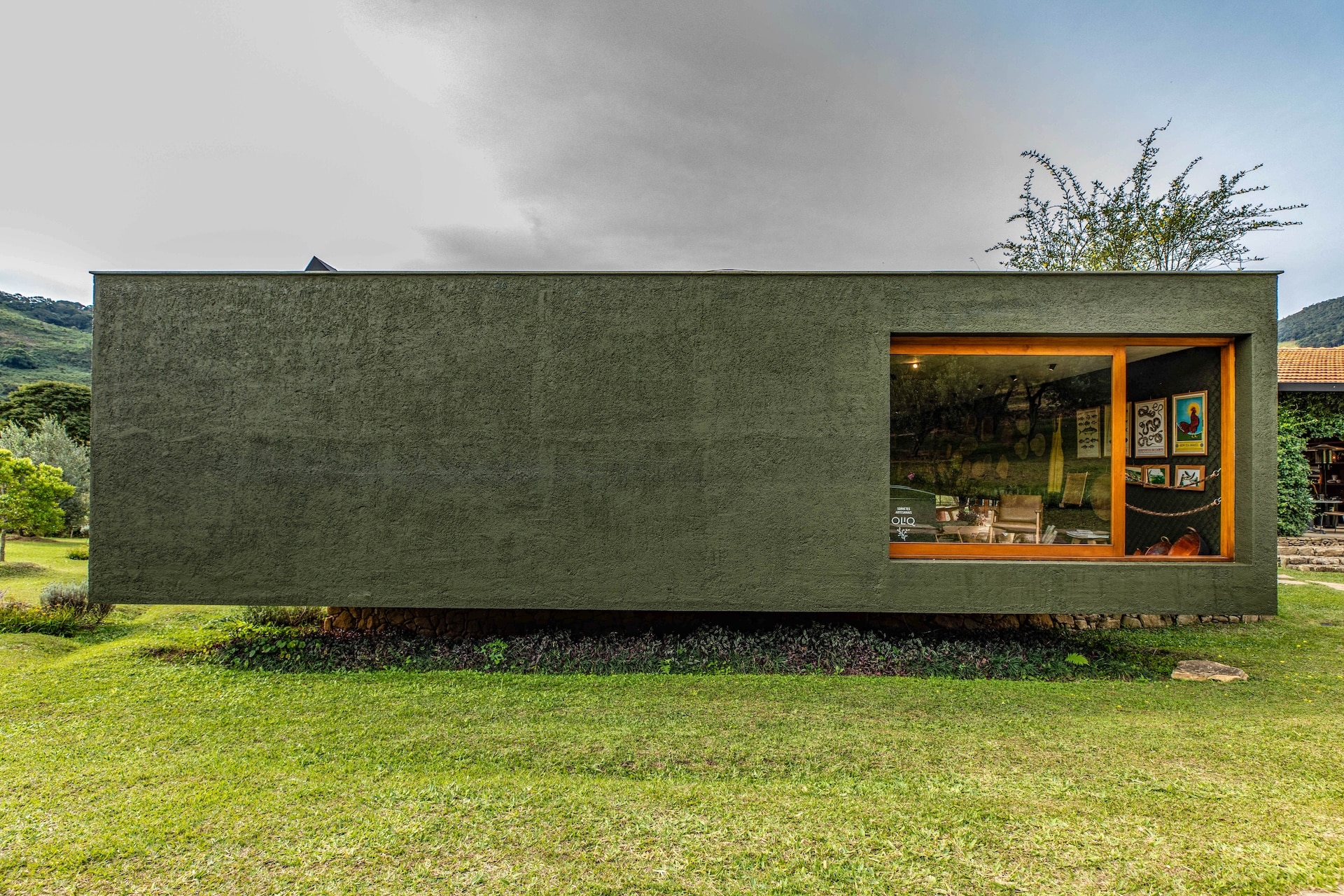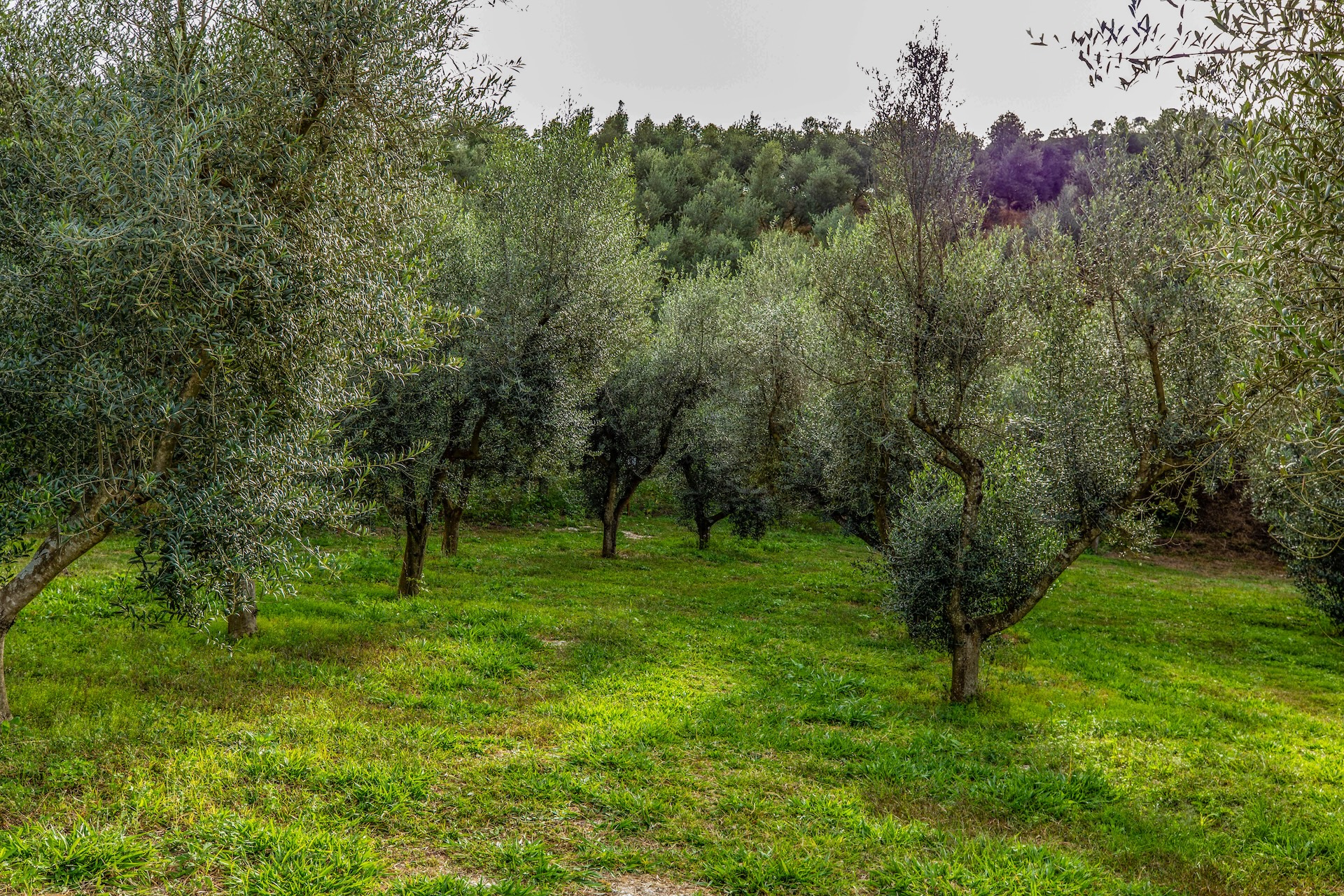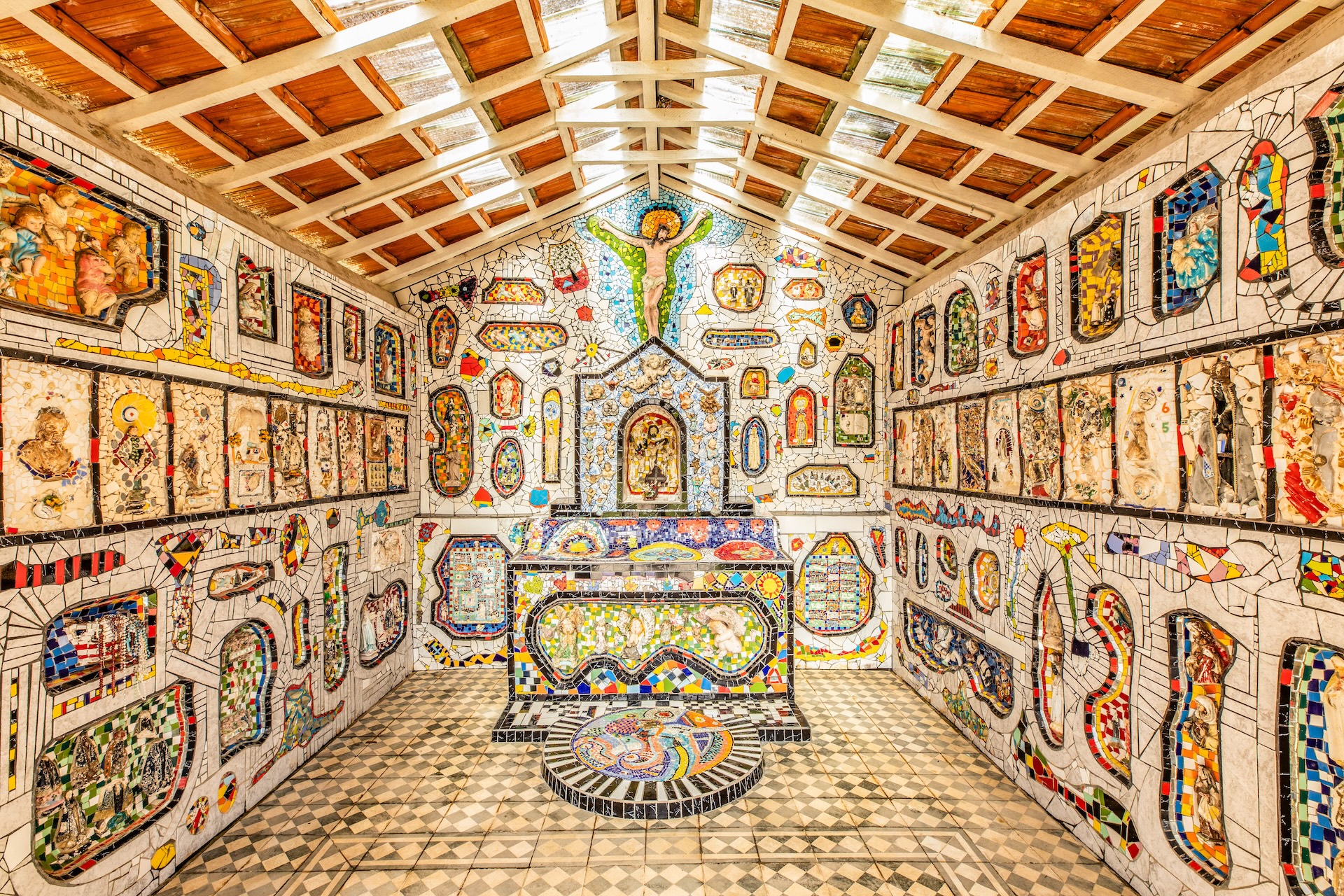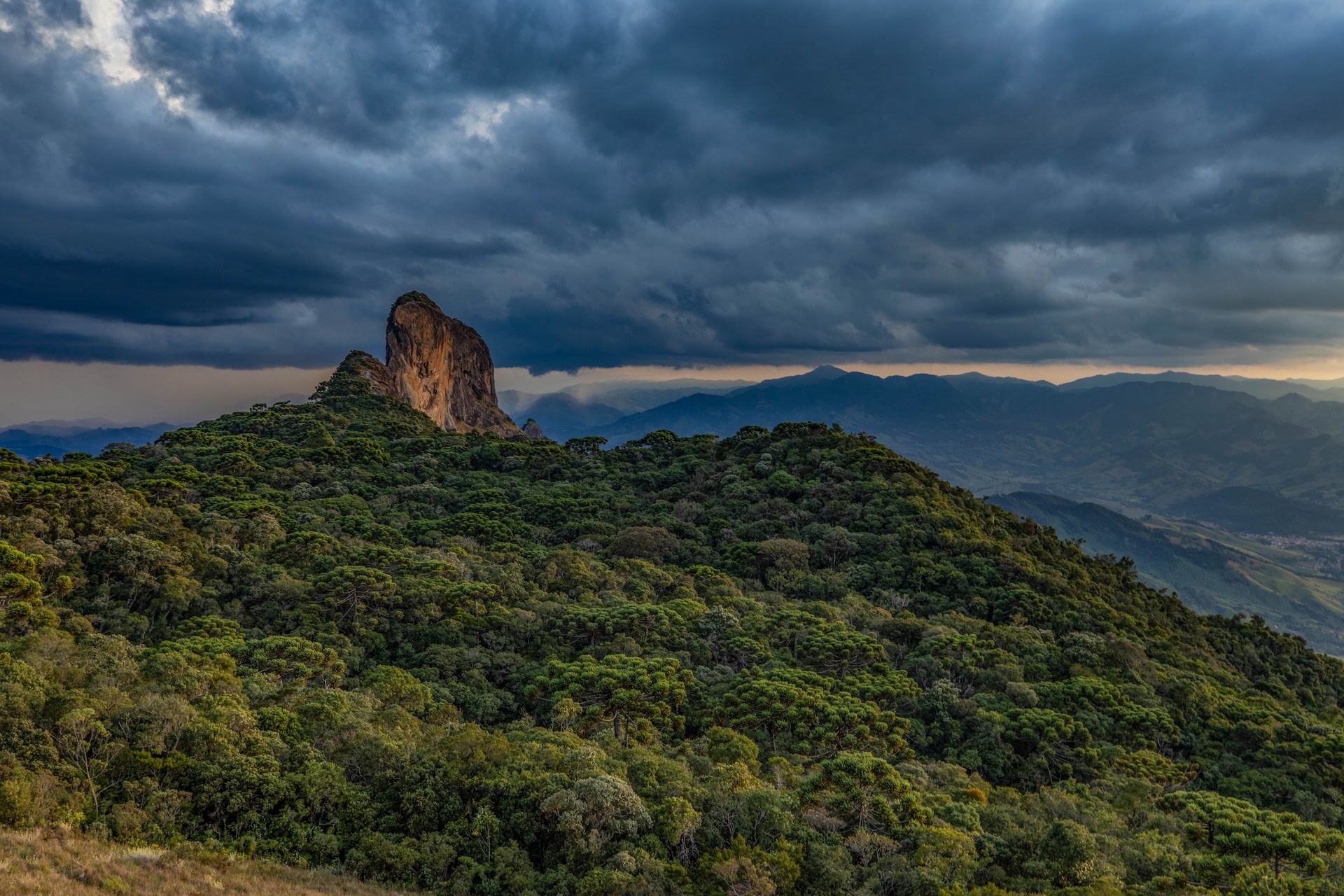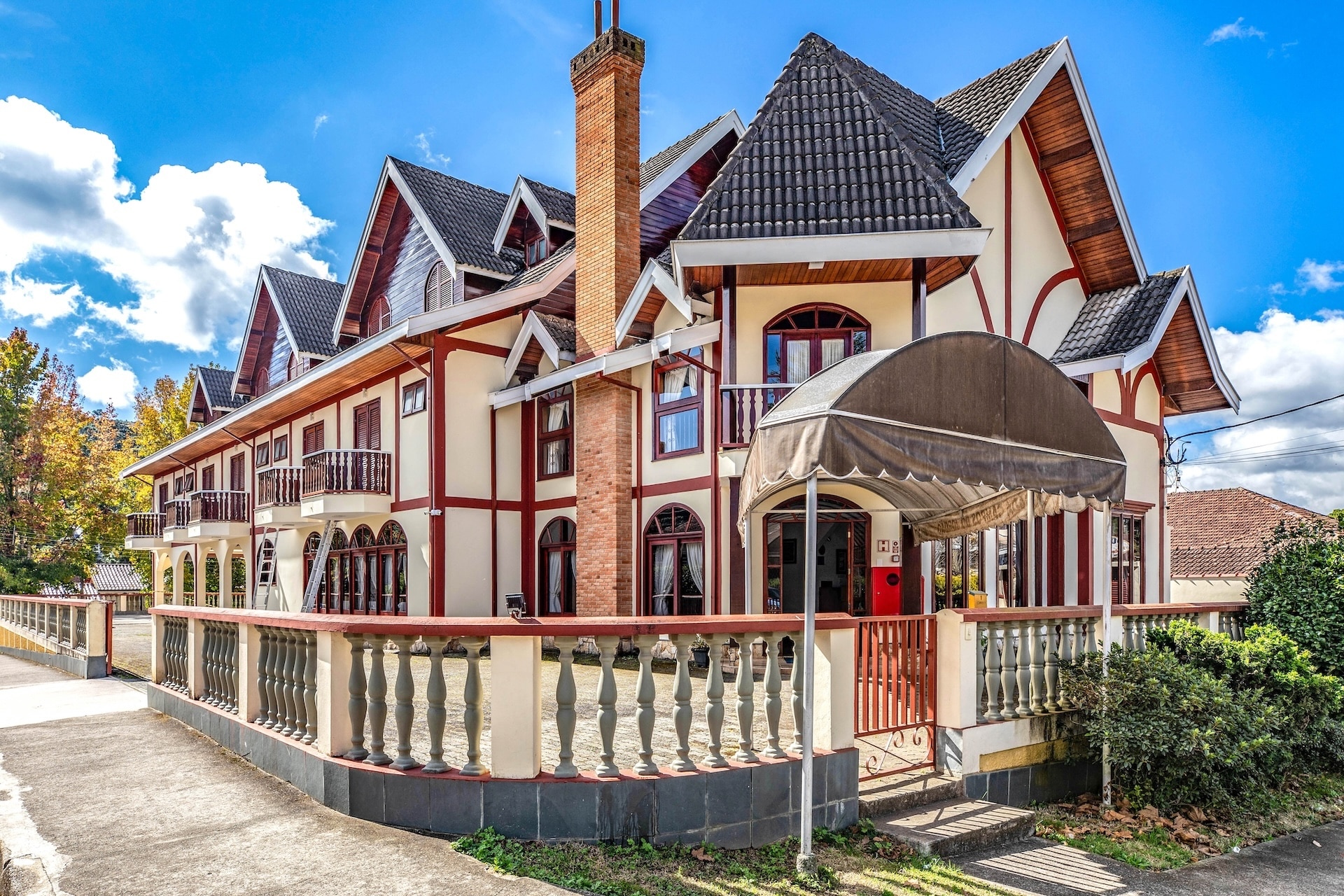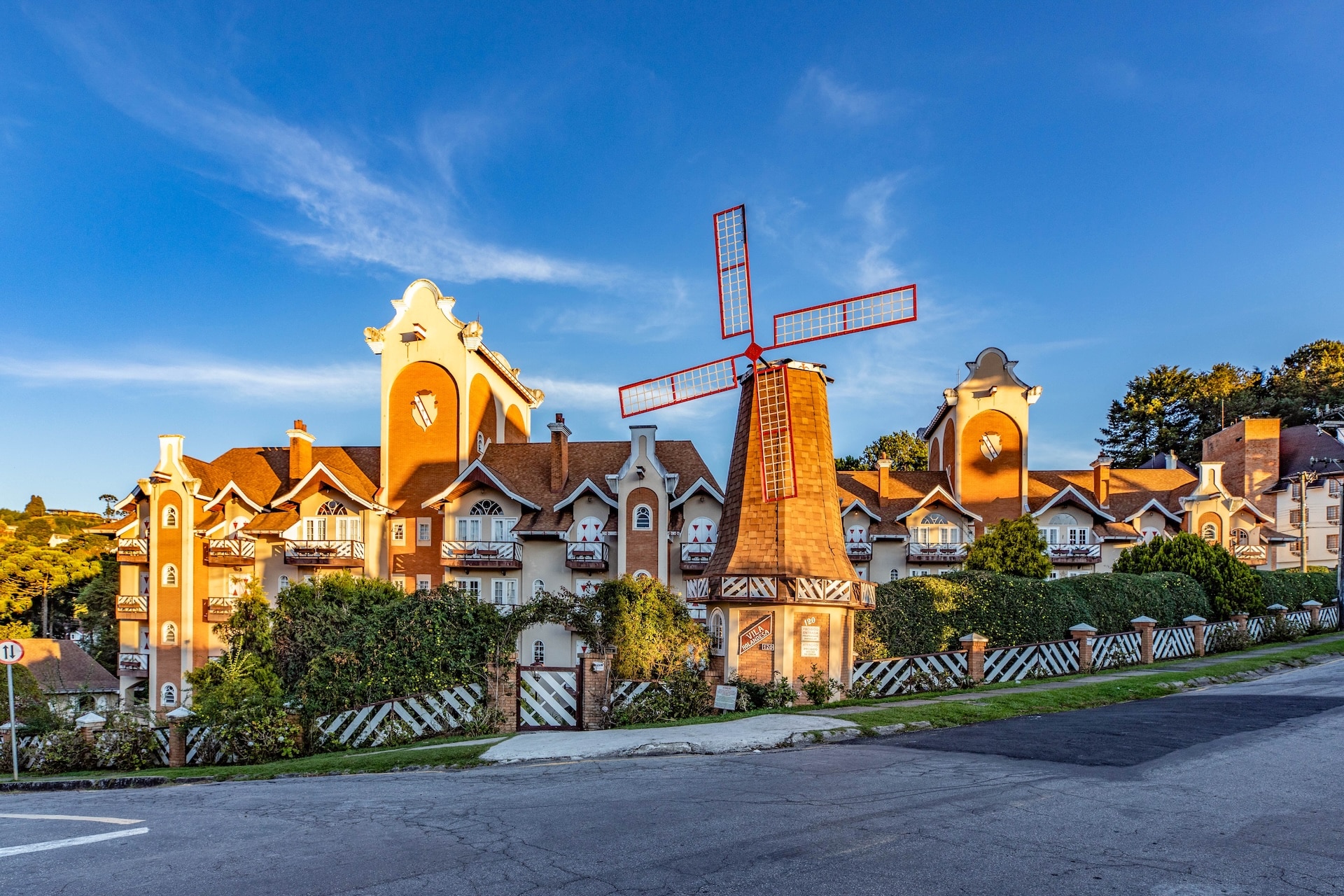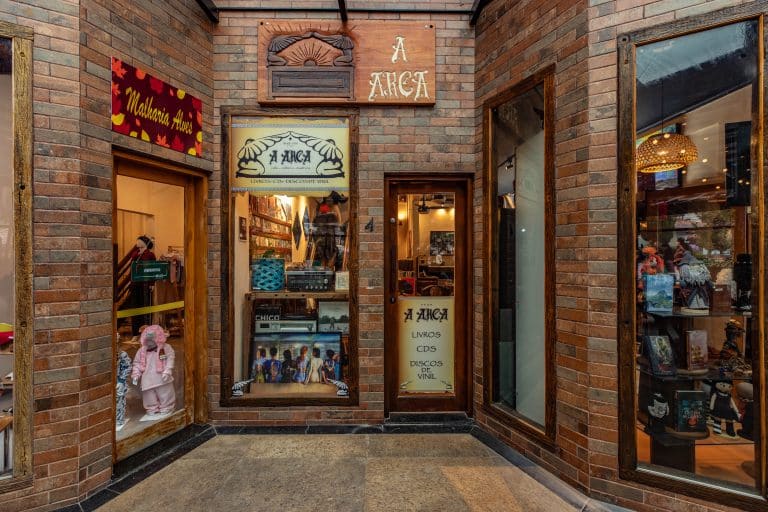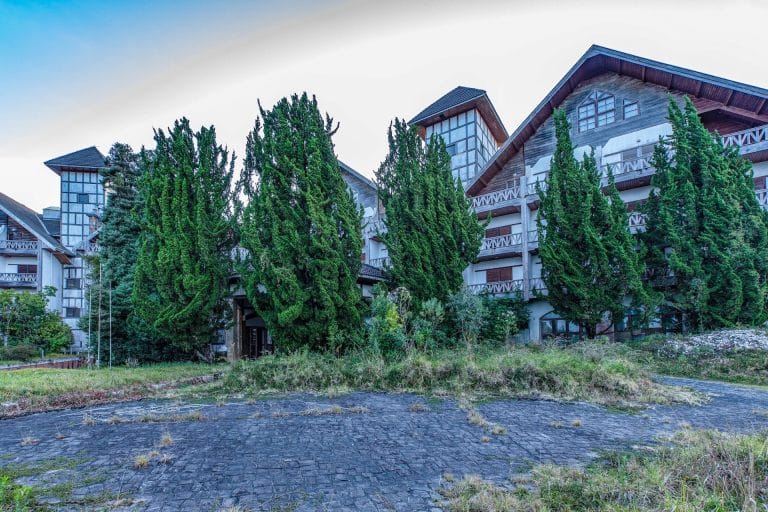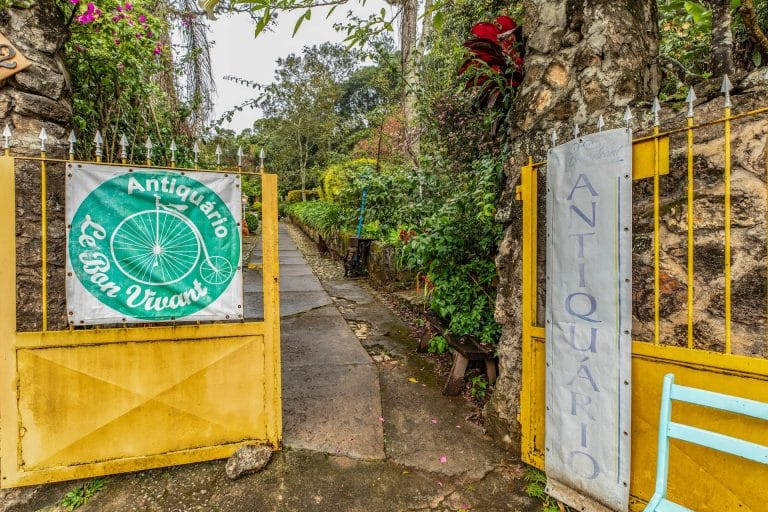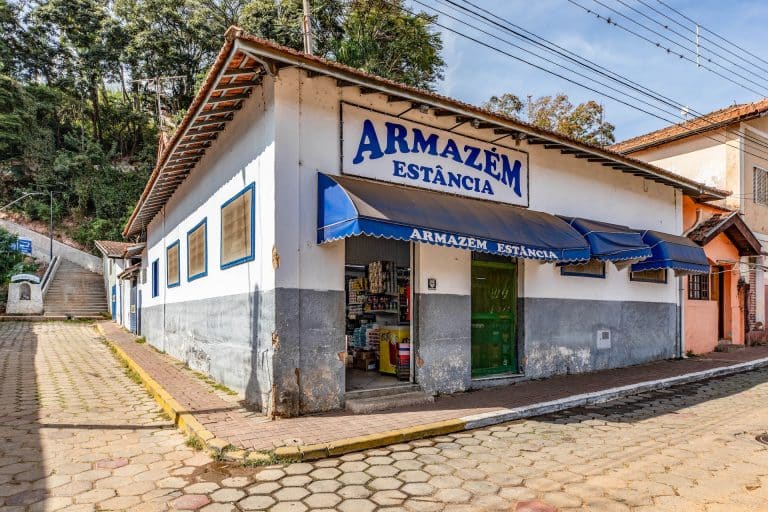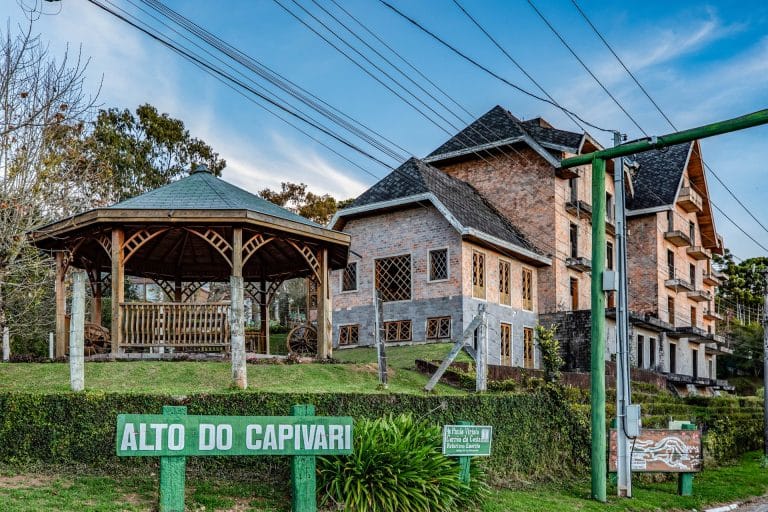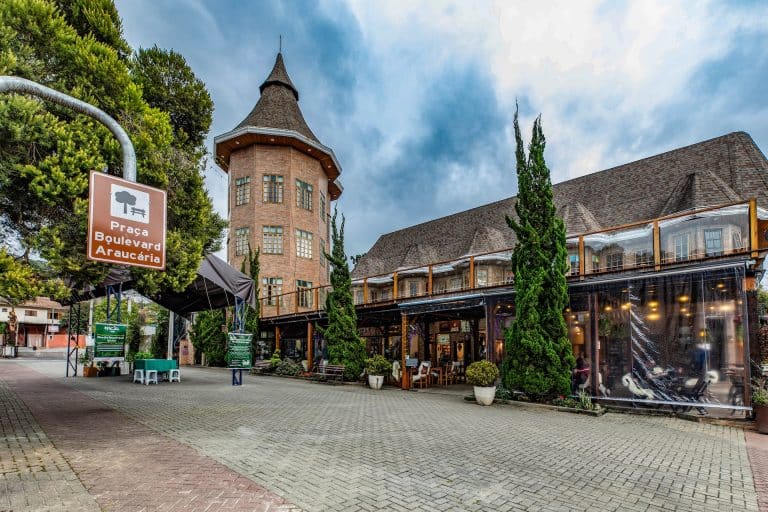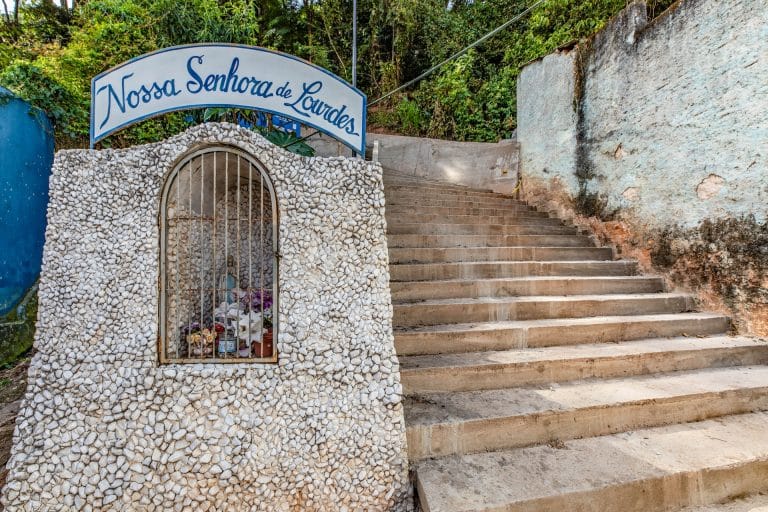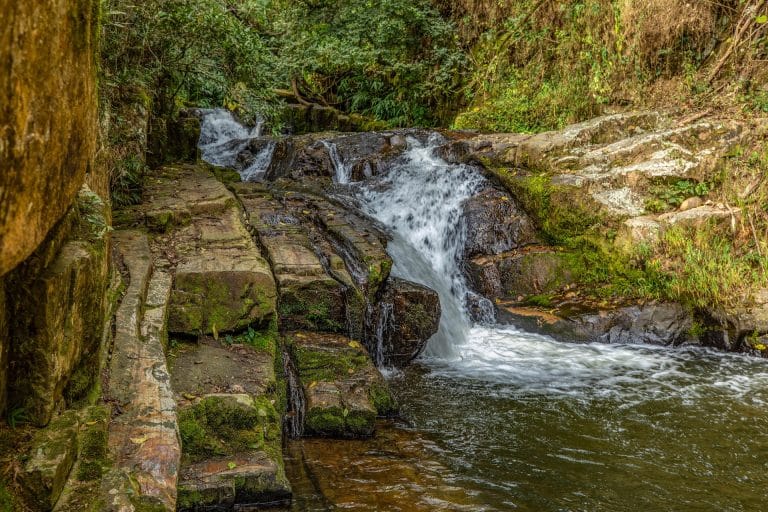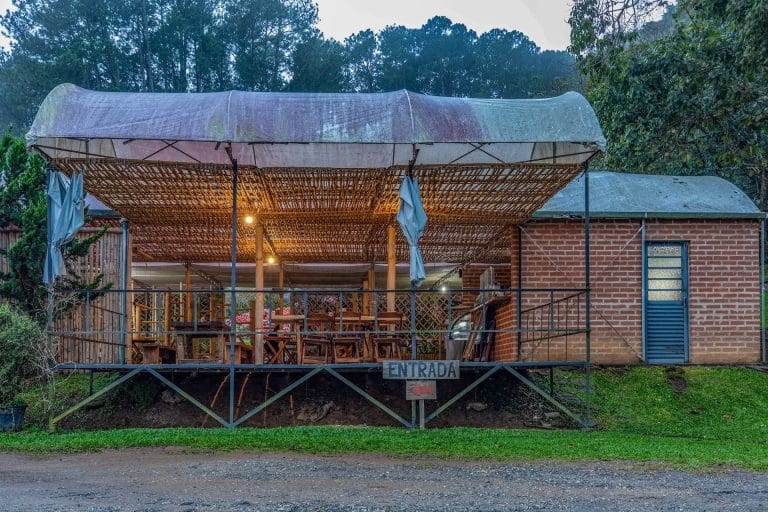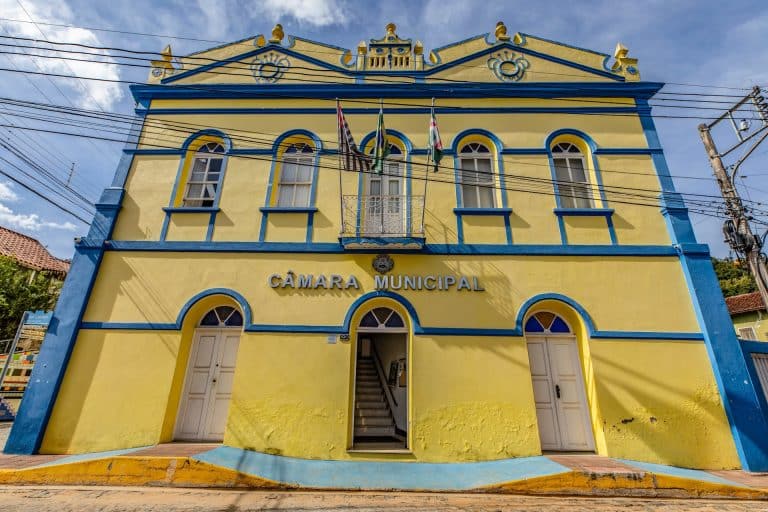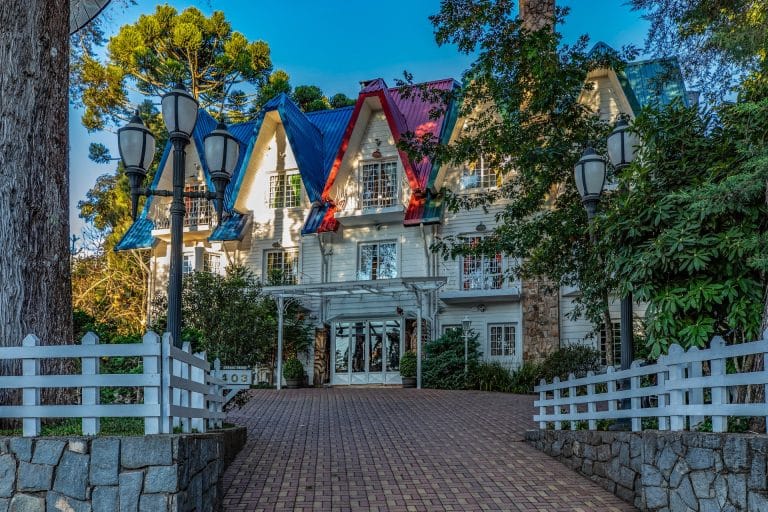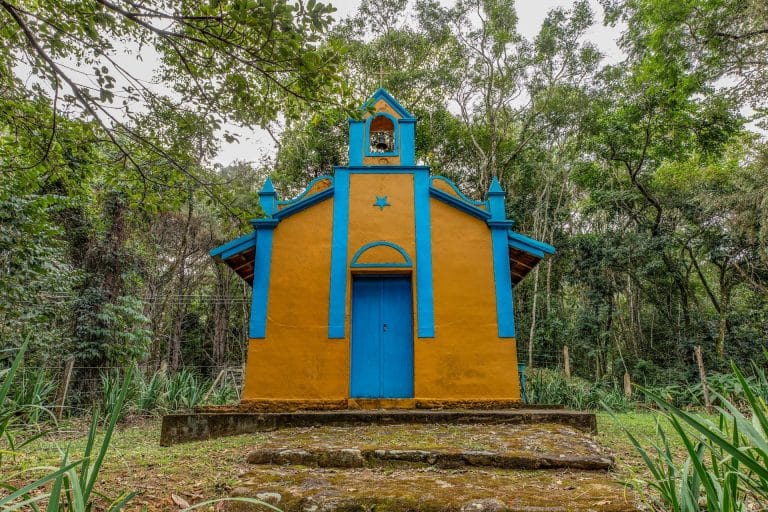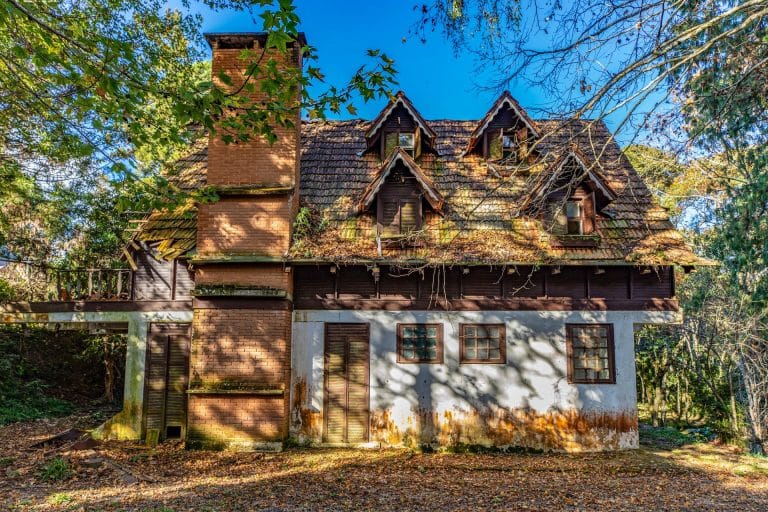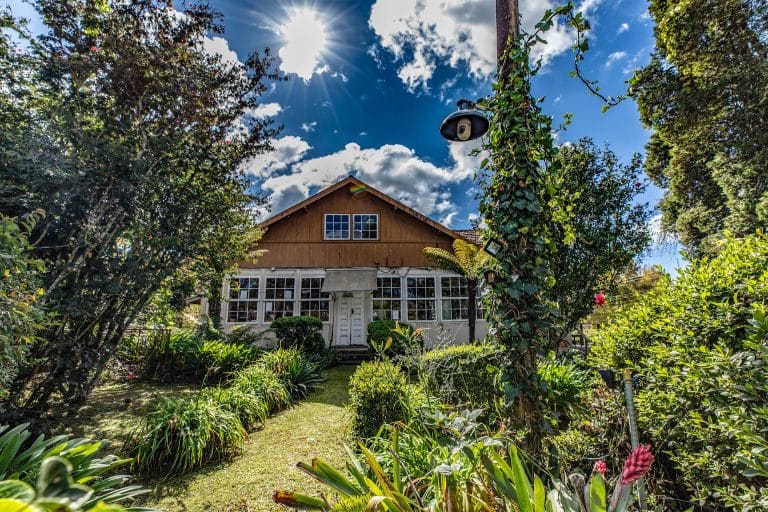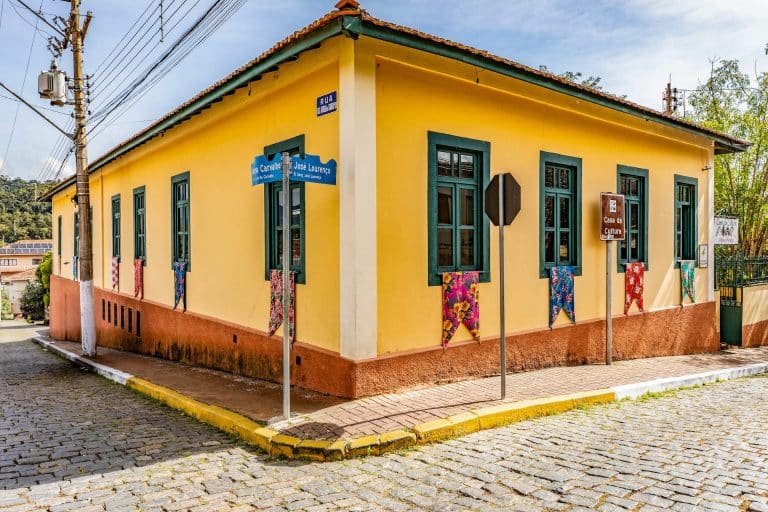Established in 1874, Campos do Jordão lies in the Serra da Mantiqueira mountain range and stands as Brazil’s highest city at 1,628 meters above sea level. Encircled by mountains, Araucaria forests, and persistent mist, it merges rugged highland scenery with distinct European influences. Its terrain offers more than just charming Alpine-style architecture: ecological trails, waterfalls, valleys, and viewpoints with stunning vistas create an appeal that balances urban ambiance with natural beauty.
The city first grew as a haven for respiratory treatments in the early 20th century, prized for its mild climate and clean air. The arrival of German, Portuguese, Japanese, and Italian immigrants later infused it with a blend of cultures and architectural styles.
Its streets feature exposed timber frames, geometric façades, and sloped roofs reminiscent of Alpine and rural villages. These features are found in landmark buildings such as the Hotel Cantinho de Portugal, Museu Casa da Xilogravura, Casa Báltica, and much of the city itself. This architectural style, inspired by Swiss and German towns, remains one of the municipality’s key visual attractions—a timeless draw for tourism.
Campos do Jordão’s climate is another standout feature. Winters are cold and dry, with temperatures sometimes dipping below zero, attracting tourists from across Brazil eager for classic winter experiences—fireplaces, heavy coats, and hot drinks.
The city is also home to the historic Toriba Hotel Spa & Gastronomia, known for its eclectic architecture. The wooden structure and clear stained-glass windows fill the space with soft golden light. Frescoes in muted tones line the walls in the restaurant. A rough-hewn stone bathtub at the spa and a restored train car converted into lodging are among the details that make it a distinctive choice for film and TV productions.
Campos’ historical heritage sites include places such as the Fundação Santa Cruz, a former tuberculosis sanatorium founded in 1932. Now a retirement home, the sprawling complex features decorative tiles, white walls, and religious symbols. Other key sites include the Museu Felícia Leirner, with eighty-five outdoor sculptures set against the natural landscape, and the Auditório Claudio Santoro, home to cultural events like the Winter Festival—one of Latin America’s most important classical music festivals.
The local cuisine also reflects the city’s European heritage. Restaurants and bistros serve dishes like fondue, trout, artisanal cheeses, and select wines, perfectly suited to the mountain climate and cozy atmosphere.
The region also offers rural tourism experiences. About thirty-two kilometers away, in São Bento do Sapucaí, one finds the Pedra do Baú State Natural Monument, a massive rock—an inspiration for everything from hiking trails to the design of local street signs. At Oliq Azeite & Olivais Brasileiros, the olive cultivation stands out for its massive scale, reviving the regional tradition of olive farming in the mountain landscape.
In neighboring Santo Antônio do Pinhal, the mountainous geography remains a key draw. Quinta dos Pinhais, a lodge set on over 240,000 square meters of preserved land, blends comfort and rustic charm with panoramic views of the Pedra do Baú. Accommodations include a heated pool, hydro-massage tubs, saunas, and Jacuzzis, all integrated into the forest surroundings. A red-dirt road, often shrouded in mist, leads to Pico Agudo, one of the region’s highest peaks—a peaceful spot, which is ideal for panoramic photography and paragliding.
Campos do Jordão is known for its robust infrastructure, with a well-developed hotel network, specialized technical services, and easy access via highways and airports. Its landscapes merge the best of mountain climates with European aesthetics, offering versatility for audiovisual productions of all genres and formats.
Key information about Campos do Jordão
Attractions
Estimated population:
Climate:
Safety and control
Public and Private Agencies and Entities
Useful Contacts
Infrastructure
Telecommunications Operators:
- Claro
- Tim
- Vivo
Banking Networks:
- Banco do Brasil
- Bradesco
- Caixa Econômica
- Caixa Eletrônico 24h
- Itaú
- Santander
Services - accommodation and food
Safety and control
Services - Technical and Logistical Support
Equipment companies for film productions
- Lighting equipment companies
Spaces for logistical support:
- Open areas for the assembly of temporary structures
- Auditoriums
- Cultural centers
- Industrial warehouses
General Services
General services available
- Post offices
- Car rental
- Van rental
- Newsstands
- Registry offices
- Exchange bureaus
- Shopping centers
- Pharmacies
Audiovisual industry professionals
- Actors
- Gaffer
- Makeup artists
- Key grips
- Editors
- Camera operators
- Audiovisual producers
- Best boys
- Sound technicians

